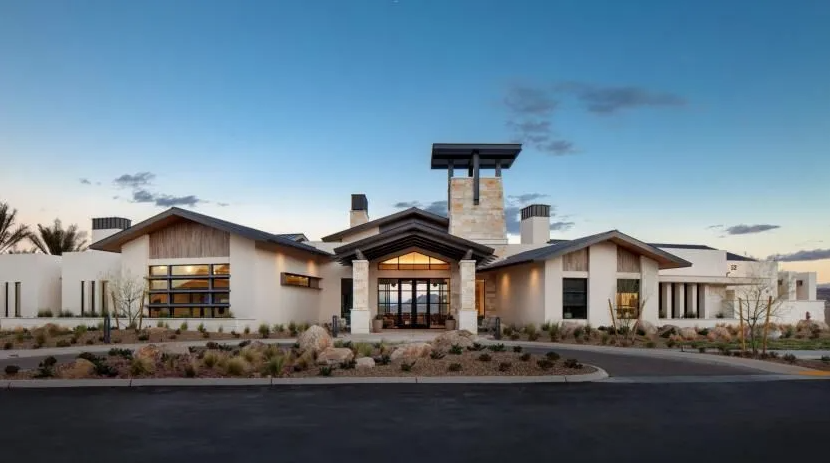Resilient design gains a new ally, bells and whistles take a back seat…and Barbenheimer comes to life?
The New Home Trends Institute team hosted our annual trend-forecasting webinar this month: 24 Trends for 2024. And for the first time, we are making the recording available to our newsletter subscribers.
Time to Hunker Down
The pandemic and rising costs have defined the past few years. A wait-and-see mentality will define 2024.
During the pandemic, we tested the limit on how many new functions we could cram into the same-sized house, with work and play becoming home-bound activities. As prices and rates soared in 2023, we stress-tested those new functions to see what could be kept in an even smaller house.
As we head into 2024, we are calling for a year of hunkering down—a year of dialing it back to the basic priorities of attracting consumers with the right spaces for the right price. The wait-and-see mindset will apply to consumers grappling with economic uncertainty and high interest rates as well as industry players navigating market challenges and an election year.
We have identified 24 consumer, home design, master plan, and building products trends we believe will shape your businesses in 2024. Here are the trends and the themes that lie within.
Market Dynamics
Industry players will navigate an affordability crunch, economic uncertainty, and new regulations.
- Tempered splurges. Indulgent purchases dwindle as pandemic savings shrink, student loans resume, and post-pandemic “catch-up spending” concludes.
- Projects in smaller portions. Consumers choose to break up projects into smaller parts instead of taking on large projects all at once.
- Land crunch. A lack of developed land compounds home affordability issues but also creates a path for more small-scale development.
- Resilient design gains a new ally. Rising insurance premiums and insurers leaving select markets accelerate climate considerations.
- “Haves” thrive. Surging home and stock values create massive wealth for homeowners fortunate enough to benefit directly or via inheritance or gifts.
Monthly Payment Reduction
Having found a floor on easy edits, builders and designers will dig deeper for meaningful ways to create homes consumers can afford.
- Spec level finds a floor. Financial constraints exceed what can be offset by spec level (and still accepted by consumers). Builders find other ways to reduce monthly payments.
- From simplifying to completely removing. Designers are starting to remove entire parts of the home, like the formal dining room, basement, and even the garage.
- Mortgage rate smackdown. Deal hunting for artificially lower rates will continue, favoring public home builders.
- ADUs: beyond multigenerational. Instead of focusing on multigenerational opportunities, more builders are offering the option to create a rental suite or accessory dwelling unit (ADU) as part of a new home, assuming that some will rent out the space for additional income.
Smart Savings
With the elevated cost of housing, designers must deliver a worthy product while finding a price that consumers can reach. This year we expect more creative swaps to save on costs without lowering quality.
- Partnerships with outside entities. Communities will form strategic partnerships with nearby businesses to make up for reduced function within the home without increasing HOA costs.
- Home builders rethink their design center strategy. In a landscape full of spec homes, builders are rethinking design centers, with some adopting virtual solutions.
- Easy-to-install materials will win. Products and design choices that require less labor or are more versatile will win market share.
- Bells and whistles take a back seat. Home designers focus on the big picture to pull consumers off the sidelines: the right spaces for the right price.
- Rethinking the kitchen island. Between changing consumer preferences and code changes, the island is shifting to support new functions, including storage, prep, and informal dining.
Smart Selling
New tools and tactics will resonate with consumers in a world focused on artificial intelligence and social media.
- Relatability rules. Authentic content emerges as king, forcing a pivot from edited advertisements to relatable imagery.
- Welcome to camp. Developers iterate on wellness, leaning heavily into “basecamp” theming that blends wilderness with the concept of finding your “center” amidst a hectic life.
- Outdoor recreation for all. With trails and outdoor spaces consistently topping the list of most-desired amenities, developers reprioritize spending, allocating more resources to activate nature amenities.
- New search. The way consumers source information is shifting, impacting how they find products and establish beliefs.
- AI raises the personalization bar. Businesses continue to leverage AI to deliver hyper-personalization. Consumers increasingly expect personalized experiences tailored to their individual needs.
Fostering Fulfillment
Consumer wellness continues to evolve, focusing more heavily on personal fulfillment and joy this year.
- Product innovation with purpose. Brands seamlessly embed features in their products that align with their brand values without requiring extra effort from the consumer.
- “Blue zone” mentality. An increased spotlight on aging solutions dovetails with a new understanding of what lengthens lifespans.
- Shared experience. Consumers seek meaningful connections based on shared values and interests.
- Selling joy. Memory points have become more important. Builders need to set themselves apart as homes are pared down further, not through bells and whistles but with moments of whimsy.
As always, trend 24 is where we have a little fun. To see how Barbenheimer is coming to housing, check out the recording.

